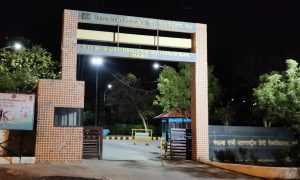The committee on the new education policy has come out with a novel idea that would, in all probabilities, offer the students a wider range of courses to choose. Students would not get bogged down anymore by ‘within the stream’ options in higher studies.
The draft report in the part 4.4 talks about enabling students to ‘explore subjects beyond the current usual curriculum’. They ‘must be given the time and the options to experiment with different subjects in a more hands-on and experimental way in order to decide what they enjoy, and so that they can gradually assess what they may want to do with their lives. Specialisation should be delayed, so that students’ choices are not dictated simply by parents or society, but rather via their own experiences, interests and self-reflections.’
It could not have been more badly structured. The ‘hands-on way’; ’what they want to do with their lives’; ‘via their self-reflections’…. sorry. The draft needs to re-written to be plain and simple that can be easily understood.
‘Specialisation should be delayed so that the students’ choices are not dictated simply by parents or society’. It is a very strange observation. The major grievance in our midst today is that the ‘students’ do not listen to their parents at all. Where then is the question of parents dictating them? ‘Those days are gone. Now, it is other way round’ – say the worrying parents.
Where it is so, if there were to be one, it would not be something forced by the parents. Rather, something dictated by other conditions like financial affordability, safety of the (girl) students and other domestic issues. In such cases, giving more options is enough to face the situation? The committee’s argument does not convince a bit. And, is there a case dictated by society, as reported in the report?
In the event of any such thing existing anywhere, it has to be taken up more seriously by the local authorities and other agencies of the government. It is an altogether separate issue that cannot be brushed aside just by giving more options in higher studies.
These grey areas apart, the core idea is very good. It marks a welcome change in the list of options available to the students moving to higher studies. The proposal would surely lend more flexibility and may therefore result in more number of students entering into the collegiate / post-school studies.
There is this great observation: ‘there should be no extra-curricular and co-curricular activities; all such activities must also be considered curricular’. It brings a new, gentle breeze into the ‘sultry’ higher education. It is a long time demand that sports and arts related activities should be made a part of the formal education. The report now paves way for it. No doubt, it is an appreciable move.
Increased flexibility in choice of subjects (P4.4.1); No hard separation of content in terms of curricular, extra-curricular and non-curricular areas (P4.4.2); no hard separation of Arts and Sciences (P4.4.3) and no hard separation of vocational and academic streams – are all good initiatives that have to be endorsed in full.
Now comes the ‘sensitive’ part of the report – ‘multilingualism’! The caption of the part 4.5 conveys the ‘intention’ of the committee which is clearly in favour of one’s mother tongue. It reads thus: ‘Education in the local language / mother tongue; multilingualism and the power of language’.
The draft report says categorically – ‘It is well understood that young children learn and grasp nontrivial concepts most quickly in their home language/ mother tongue. There is a strong need for classes in early years to be conducted in students’ local languages’.
The report very correctly identifies the problem in the education in local languages / mother tongue and pleads to set things right. It says – ‘It is important that local languages, including tribal languages are respected, and that excellent text books are developed in local languages, when possible, and outstanding teachers are deployed to teach in these languages’.
Part 4.5.1 says – ‘When possible, the medium of instruction – at least until Grade 5 but preferably till at least Grade 8 – will be the home language / mother tongue / local language. High quality text books, including in Science, will be made available in home languages as is needed and feasible, e.g. via the Indian Translation and Interpretation Mission or its State counterparts. In such cases where such text book material is not available, the language of transaction between teachers and students will still remain the home language when possible, even if text books are, e.g. in the State /regional language.’ (P4.5.1)
‘The school education system will make its best effort to use the regionally preponderant home language as the medium of instruction’.
In fact the committee has been so thoughtful to include a clause on ‘Bilingual approach for those whose language is different from the primary medium of instruction’. (P4.5.2) It goes on to say – ‘Teachers will be encouraged to use a bilingual approach, including bilingual teaching and learning materials, with those students whose home language may be different from the medium of instruction to ensure smoother transition from the home language to the medium of instruction.’ Fair enough. Is it not?
The draft report speaks about the ‘standardising the sign language’ as well. (P 4.5.4) ‘Indian Sign Language’ (ISL) will be standardised across the country and National and State curriculum materials developed, for use by students with hearing impairment. ‘ Here again, the committee has shown a tremendous sense of responsibility when it says – ‘local sign languages will be respected and taught as well where possible and relevant’. Is it not a good, healthy suggestion?
How many of us did really care to read the text of the report at least on its stand towards the local languages? The report has not anything, anywhere against the interests of the local languages. It has, on the other hand, placed its fervent appeal to pay more attention to making the reading materials in the vernacular languages for the benefit of the students and for the development of the languages.
Honestly, the language ‘fighters’ should, in all sincerity, thank the committee for the emphasis that it lays for the studies in the home languages. Anyway, for the reasons best known to them, they prefer to keep silent about the positive aspects of the report and are ready to ‘wage a war’. It is nothing but a political perception; a political agenda by vested interests. At the same time, it is very much a part of democracy. We have to admit that they may have a point too since ‘education’ as we have said earlier, has so many players and all of them have rights that are inferior to none. And so, it is the duty of the authorities concerned to dispel any apprehension in this regard in a proper, acceptable manner.
While we call these voices of dissent politically motivated, the question remains – Will there be smoke without fire?
(to continue
- Baskaran Krishnamurthy.
- Mail: [email protected]


























 WhatsApp us
WhatsApp us
Pingback: porn
Pingback: porn
Pingback: 사설토토
Pingback: 카지노사이트
Pingback: Fake watches
Pingback: What is Torch onion address?
Pingback: Winnipeg furnace Shorty's Plumbing & Heating Inc; Winnipeg HVAC Shorty's Plumbing & Heating Inc
Pingback: seo prutser
Pingback: agen togel terpercaya
Pingback: Stockholm is Sweden's center of trade and commerce, having it accorded with the capital town standing by its government. Watching a map, it's settled on a gaggle of various isles in Lake Malar towards the Baltic
Pingback: floor epoxy coating
Pingback: replica rolex sea-dweller
Pingback: winstrol maha pharma
Pingback: Dylan Sellers
Pingback: buy/order Wana Jewels Cannabis Edibles online use for pain, anxiety, sleep for sale near me bulk in usa uk nz canada australia overnight delivery cheap
Pingback: best cbd oil vape pen starter kit
Pingback: richscarpentry.com
Pingback: cvv store
Pingback: cvv dumps
Pingback: gambling
Pingback: best replica watch site
Pingback: Regression testing
Pingback: Quality engineering
Pingback: Lyngdorf Audio DPA-1 manuals
Pingback: lace front wigs
Pingback: 김치티비
Pingback: sexy tattoo girl wallpaper
Pingback: cash out dumps with pin
Pingback: Digital Transformation consulting company
Pingback: judi online
Pingback: Sexual Assault Evidence
Pingback: cheap red bottom shoes with 2 inch heels christian louboutin replica
Pingback: it danışmanlığı
Pingback: How Writing And Blogging Is Beneficial?
Pingback: Order/purchase/buy Burmese Magic Mushrooms online